Edie Melson's Blog, page 210
February 8, 2020
Learning to Thrive in the Midst of Chaos
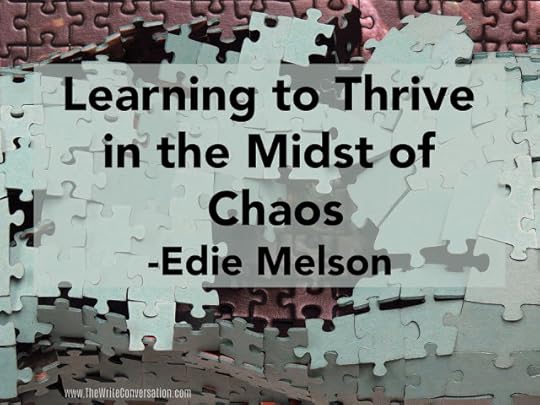
by Edie Melson @EdieMelson
I love how relevant and real the Bible is. God’s word doesn’t sugar coat life. He uses authentic—flawed—people to illustrate His truth, His forgiveness, and His grace. I can find myself in almost everyone I read about. Occasional I get it right and find myself imitating Mary. Although all too often I’m more of a Martha clone. I’m as impulsive as Peter, as much of a doubter as Thomas, and as unwilling to leave circumstances in God’s capable hands as Sarah. Some days I’m not certain living unruffled is a possibility for someone as flawed as me. Anytime life throws me a curve, I begin reacting to the busyness instead of concentrating on walking with God through the chaos.
For example, there was a trip I took to speak at a conference when several of our appliances staged a full-scale revolt. I wasn’t there, but my poor husband and three sons witnessed the carnage.
The first I heard about the disaster was through a call from my husband. He announced, via cell phone, that our refrigerator had died. Yes, he’d called the repair man before he called me—he’s a truly wise man—but all the technician could do was apply a temporary fix so I could be the one to pick out the new one once I got home. The next day hubby called again. This time the casualty was our clothes dryer, and it was beyond help.
On the last day of my conference I was leaving a class when my phone vibrated in my pocket. Sure enough, the picture on the screen promised it was my beleaguered husband. I seriously considered letting it go to voice mail, but my better nature prevailed and I worked up the fortitude to answer. Sure enough our stove and microwave—two separate appliances in our home—had joined the list of dead and dying devices.
This put me in full gotta-fix-this mode. I wasn’t worried about peace, I was deep into my to-do list.
On the flight home God and I had a discussion.
I began by pointing out to Him that while I was away from home being obedient, He could at least look after things there. I reminded Him how hard it was to concentrate on what He wanted me to do when my life was in upheaval. Surely He could orchestrate better circumstances from now on.
I know, He should have thumped me hard on the head. Instead of sending down a lightning bolt at my audacity, He pointed me back to the Bible. Specifically He sent me to study Jesus during the chaotic years of His ministry.
As I thumbed through the accounts of Jesus’ three short years of ministry I shook my head. I was reluctant to take Him as a legitimate example. After all, I explained to the Creator of the Universe, Jesus was God so He had the ability to stay calm in trying circumstances. I was flawed and weak. I needed my heavenly Father to cut me some slack.
We are never so blind as when we refuse to see.
Instead of chastising me, God sent me back to His word and to this verse, “Truly, truly, I say to you, whoever believes in me will also do the works that I do; and greater works than these will he do, because I am going to the Father.” John 14:12 (ESV).
Well ouch. Just ouch. Talk about getting my attention.
When something in the Bible troubles me, I’ve learned that instead of ignoring it or glossing over it, I need to dig deep and see what God is actually saying. So in light of what God was teaching me, I dug in and tried to make sense of something uncomfortable.
Even if I could ignore how well Jesus handled ministry in real life circumstances, I couldn’t minimize the fact that we were promised the ability to do amazing things ourselves. Not because we’re now self-sufficient—never that. Instead it was possible because we would have a helper. Jesus sent us the Holy Spirit to provide everything we needed and more.
I was out of excuses.
I recognized that I’d fallen into the trap of dismissing how Jesus did life simply because I knew He was the Son of God. I completely ignored the fact that Jesus was also fully human—struggling with weariness, stress, and the difficulties of balancing life. He faced many of the same issues we face today—difficult family situations and members, drama in His friends and followers, and a world that was hostile to His belief system. All of these are things I can relate to.
After apologizing to God and asking forgiveness, I spent the next few weeks looking at Jesus’ life. I dissected and devoured every encounter the Bible records and translating it into a pattern I could apply to my own life. I learned that I must never make the mistake of trivializing the trials He faced. Within those trials lay the keys to living in peace while chaos whirls around us
I learned 3 basic things by studying Jesus’ life in regard to conquering chaos.1. The foundational fact I discovered was how everything Jesus did flowed from the relationship He had with His Father. Just like us, He and His Father shared a yoke as He served. He didn’t try to do anything apart from God. His strength was not His own. It flowed from the power of God at work through Him.2. also observed that Jesus’ life was characterized by an ongoing conversation with God. Reading the Bible, sometimes I saw the specific communication spelled out, other times it was referred to or implied. Regardless, it was a defining hallmark of the way Jesus lived.3. Finally, I saw that He let go of His priorities and committed Himself to following God’s path, no matter how difficult seemingly crazy. He didn’t let the expectations of others dictate His actions or distract Him from the purpose of God.*Devotion used with permission from UnRuffled, Thriving in the Midst of Chaos, Bold Vision Books
TWEETABLELearning to Thrive in the Midst of Chaos - encouragement from @EdieMelson (Click to Tweet)
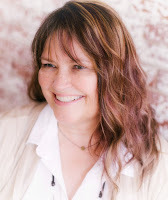 Edie Melson is a woman of faith with ink-stained fingers observing life through the lens of her camera. No matter whether she’s talking to writers, entrepreneurs, or readers, her first advice is always “Find your voice, live your story.” As an author, blogger, and speaker she’s encouraged and challenged audiences across the country and around the world. Her numerous books reflect her passion to help others develop the strength of their God-given gifts and apply them to their lives. Connect with her on her website, through Facebook, Twitter and Instagram.
Edie Melson is a woman of faith with ink-stained fingers observing life through the lens of her camera. No matter whether she’s talking to writers, entrepreneurs, or readers, her first advice is always “Find your voice, live your story.” As an author, blogger, and speaker she’s encouraged and challenged audiences across the country and around the world. Her numerous books reflect her passion to help others develop the strength of their God-given gifts and apply them to their lives. Connect with her on her website, through Facebook, Twitter and Instagram.
February 7, 2020
Do We Have to Choose Between Our Real Life and Our Writing Life?
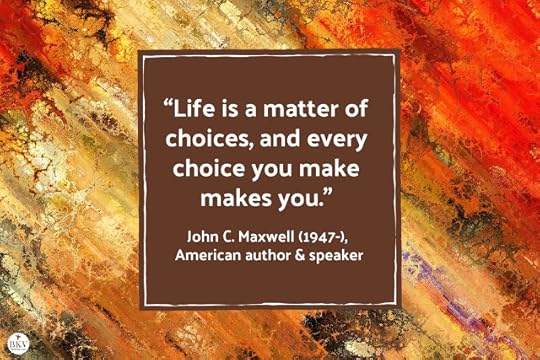
by Beth K. Vogt @BethVogt
My husband Rob proofreads all my blog posts.
My husband is a family physician, not a writer. But through the years, he’s gotten quite good at being another pair of eyes for me. He catches typos, missing words, misspellings, and also lets me know if a sentence or paragraph doesn’t make sense. The guy’s a good editor.
Interesting fact about my January blog: Rob disagreed with one sentence in my post, which was titled “Writers, Sometimes We Just Need to Admit We Can’t Do It All.” We talked about what I’d written and I left the sentence in. But I decided to turn our conversation into this month’s post.
Last month, I talked about how I had to cancel a speaking engagement because one of my daughters ended up in the hospital after having emergency surgery.
What sentence did Rob disagree with?
“The demands of my real life eclipsed my writing life.”
Here’s how my husband explained his point of contention to me: “Your writing life is part of your real life. It’s a different part—but you don’t have to always separate the two. You’re seeing things in real life to put into your writing.”
I’ve thought a lot about his words since then and realized my husband is right.
Writers, why are we so quick to separate our “real” life—family, friends, our “other” jobs—from our writing life? In doing so, we act as if the two can’t coexist together, as if they are oil and water, never quite able to blend together.
Rob helped me realize it’s unnecessary to separate my “real” life from my “writing” life. Even more, it’s a false distinction.
I’m a woman. A wife. A mom. A friend. A writer. And each of these aspects of my life blend together—there are no lines separating one part of my life from the others. Sometimes the mixing is easy. And yes, sometimes it feels like the circumstances of my life are poured into a Vitamix blender with all the switches on HIGH.
But that’s just how life goes, right? Competing demands. Competing values—and yes, we weave that tension into our novels, don’t we?
From here on out, I’m keeping life real—all of it. There’s no separating of “real” life and “writing” life for me. My real life includes my writing life and my writing life is influenced by my real life, day in and day out.
Care to join me in abandoning the separation between our writing lives and our real lives? What kind of difference would it make for you?
TWEETABLEDo We Have to Choose Between Our Real Life and Our Writing Life? - @BethVogt on @EdieMelson (Click to Tweet)
 Award-winning author Beth K. Vogt believes God’s best often waits behind the doors marked “Never.” Having authored nine contemporary romance novels and novellas, Beth's first women's fiction novel with Tyndale House Publishers, Things I Never Told You, released May 2018. Moments We Forget, book two in the Thatcher Sisters Series, releases May 2019. An established magazine writer and former editor of the leadership magazine for MOPS International, Beth blogs for Novel Rocket and The Write Conversation and also enjoys speaking to writers group and mentoring other writers. Visit Beth at bethvogt.com.
Award-winning author Beth K. Vogt believes God’s best often waits behind the doors marked “Never.” Having authored nine contemporary romance novels and novellas, Beth's first women's fiction novel with Tyndale House Publishers, Things I Never Told You, released May 2018. Moments We Forget, book two in the Thatcher Sisters Series, releases May 2019. An established magazine writer and former editor of the leadership magazine for MOPS International, Beth blogs for Novel Rocket and The Write Conversation and also enjoys speaking to writers group and mentoring other writers. Visit Beth at bethvogt.com.
February 6, 2020
Are There Places I Should Auto-Feed My Blog Posts?

by Edie Melson @EdieMelson
Actually there are.
And after teaching at a conference recently I discovered that a lot of bloggers are unaware of this audience-building option. So today I’m going to share some places where auto-sharing your blog posts are a good idea and some that are a less than helpful place to share. Valuable Places to Auto-Feed a Blog Post
1. Amazon Author Page. If you write books and they’re available on Amazon you should have an Amazon author page and your blog posts should auto feed there.
How to do it:Visit www.AuthorCentral.Amazon.com. If you don’t have an author page, this is where you set it up. Under Update Your Author Page, click on the first bullet point—Add multimedia, blog feeds, or events to an Amazon Author Page.Under Blogs, add your blog site’s RSS feed. Finding your blog site’s RSS. I’m certain there are technical ways to find out what your RSS feed is, but I use the trial and error method. I add one of the following to the end of my blog until it works:rssrss.xmlatom.xmlindex.rdf
For the Write Conversation, I had to add rss.xml. For the Blue Ridge site, I had to add just rss
Amazon allows you to import multiple blog site RSS feeds, so I have both The Write Conversation and the Blue Ridge blog on my Amazon author page.
2. Goodreads
How to do it:Go to your author profile on Goodreads.Click Edit Author ProfileClick Edit BlogUnder External Blog Feed, paste in your blog site’s URL with the RSS endingBe sure to click Save Changes
NOTE: Goodreads only allows one RSS feed.
In the past, we’ve been able to link our RSS feeds to LinkedIn, but it appears that is no longer an option.
Where should we NOT auto-feed blog posts?
Anywhere on social media. Yep, you read that correctly. I do NOT recommend linking your blog to social media. It may seem like a time-saving way of doing things, but it’s really not. Here’s why:
1. There’s no way to personalize the content for specific networks. That means there’s no tagging and no hashtags. 2. It’s auto-generated by a computer and the update will read like a computer wrote it.
For social media it’s always best to compute the update you want to share specifically for the network where you’re sharing it.
These are my tips for where to share your blog, I’d love to know if I’ve missed anywhere you share your site. Be sure to leave your thoughts in the comment section below.
Don’t forget to join the conversation!Blessings,Edie
TWEETABLEAre There Places I Should Auto-feed Why Blog Posts? - tips from @EdieMelson (Click to Tweet)
 Edie Melson is a woman of faith with ink-stained fingers observing life through the lens of her camera. No matter whether she’s talking to writers, entrepreneurs, or readers, her first advice is always “Find your voice, live your story.” As an author, blogger, and speaker she’s encouraged and challenged audiences across the country and around the world. Her numerous books reflect her passion to help others develop the strength of their God-given gifts and apply them to their lives. Connect with her on her website, through Facebook, Twitter and Instagram.
Edie Melson is a woman of faith with ink-stained fingers observing life through the lens of her camera. No matter whether she’s talking to writers, entrepreneurs, or readers, her first advice is always “Find your voice, live your story.” As an author, blogger, and speaker she’s encouraged and challenged audiences across the country and around the world. Her numerous books reflect her passion to help others develop the strength of their God-given gifts and apply them to their lives. Connect with her on her website, through Facebook, Twitter and Instagram.
February 5, 2020
Adorning the Dark—A MUST Read for Every Writer
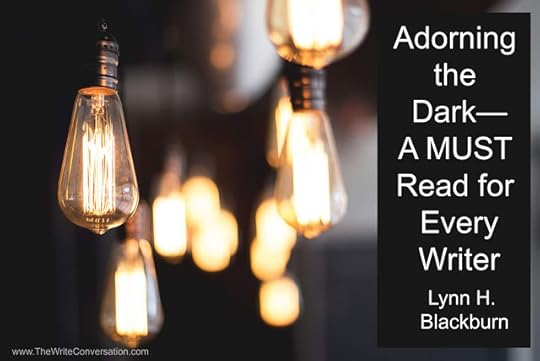
by Lynn H Blackburn @LynnHBlackburn
I’ve been reviewing books on The Write Conversation for a long time, and I don’t think I’ve ever said this before, but here goes:
Everyone needs to read Adorning the Dark by Andrew Peterson.
If you don’t already know, Andrew Peterson is a songwriter and novelist (and a lot of other things) and Adorning the Dark is part memoir, part encouragement, part writing advice, and part exploration into what it means to do creative work that will “adorn the dark with the light of Christ.”
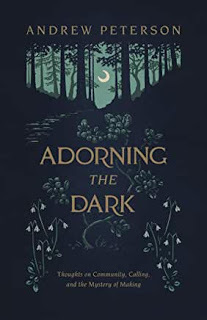 I read
Adorning the Dark
while writing what will be, Lord willing, my sixth published novel. Every time I start a book, I experience
I read
Adorning the Dark
while writing what will be, Lord willing, my sixth published novel. Every time I start a book, I experience And then I read this: “How do we find the faith to press on? Remember . . . It happened . . . So I look at the last album, the last book, and I’m forced to admit that I didn’t know anymore then than I do now. Every song is an Ebenezer stone, evidence of God’s faithfulness. I just need to remember. Trust is crucial. So is self-forgetfulness and risk and a measure of audacity.”
So I remember that, in fact, I have done this before. And I was just as scared then as I am now. But God! God is faithful. And so I write.
And then later, on a day when I just wasn’t feeling it . . . you know what I’m talking about, right? There was this kick in the pants: “The secret is that there is no secret. All you need is to force yourself to do it.” Alrighty then!
While I have read a lot of books about writing, craft, creativity, productivity, the intersection of faith and art . . . you name it . . . I have never felt so known, so seen, so understood, and so, well, maybe not completely nuts, as I did while reading this book. I realize that may sound like hyperbole, but it’s true. There were many times when I stopped reading, took pictures of the pages with my phone, then read them again to be sure I’d read correctly the first time, and then texted screenshots to friends to share the goodness and beauty found in these pages.
And now, I’m sharing it with you. Adorning the Dark is encouraging, uplifting, and inspiring. It’s also convicting, blunt, and uncompromising.
Read it.
Grace and peace,

TWEETABLEAdorning the Dark—A MUST Read for Every Writer - a review from @LynnHBlackburn on @EdieMelson (Click to Tweet)
 Lynn H. Blackburn loves writing suspense because her childhood fantasy was to become a spy—but her grown-up reality is that she's a huge chicken and would have been caught on her first mission. She prefers to live vicariously through her characters and loves putting them into all kinds of terrifying situations—while she's sitting at home safe and sound in her pajamas!
Lynn H. Blackburn loves writing suspense because her childhood fantasy was to become a spy—but her grown-up reality is that she's a huge chicken and would have been caught on her first mission. She prefers to live vicariously through her characters and loves putting them into all kinds of terrifying situations—while she's sitting at home safe and sound in her pajamas! Her Dive Team Investigations series kicked off in 2018 with Beneath the Surface and In Too Deep (A SIBA Okra pick and Selah Award Finalist). The 3rd book in the series, One Final Breath, releases in September 2019. She is also the author of Hidden Legacyand Covert Justice,which won the 2016 Carol Award for Short Novel and the 2016 Selah Award for Mystery and Suspense. Lynn lives in South Carolina with her true love and their three children. You can follow her real life happily ever after at www.LynnHBlackburn.com and on Facebook, Twitter, Pinterest, and Instagram.
February 4, 2020
How to Kill a Character in Your Novel
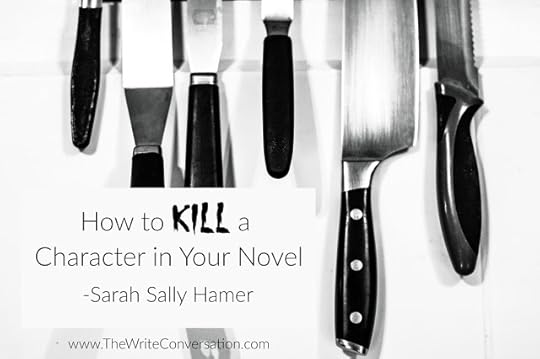
by Sarah Sally Hamer @SarahSallyHamer
Yes, there are right ways and wrong ways to kill a character in a fiction story. And, even if we're working with non-fiction and telling a true story, we might still need to determine how to tell how a character will die. We often have characters that, for one reason or another, need to be left behind. Maybe it's a mentor, like Obi-Wan Kenobi in Star Wars. We know from the beginning of Charlotte's Web (at least, some of us know!) that the spider, Charlotte, will die, because few small critters like her live very long. But there's a time and place to help make the story more real, to create the most impact. And, we have to find it.So, deciding why and when to kill a character takes some thought:
1. Why do you think the character should die? And, part and parcel of that, why did you invent the character in the first place? What role does the character play? Characters aren’t just there for the fun of it. They each play a very specific part in a story. We can use the archetypes for examples:
A Hero/ine is who the story is about. We rarely see them die because the story wraps around them. Maximus in Gladiatoris one of the rare exceptions.
A Mentor like Obi-Wan teaches the lesson, then goes away. Dying is common for this archetype. After all, would Luke have been able to grow into the man he becomes if he’d had Obi-Wan to tell him what to do all the time?
Goose plays Maverick’s Best Friend archetype in Top Gun. He dies to propel Maverick into facing his past and the loss of his father.
The Villain archetype dies all the time, since we have to slay the dragon. But once this archetype is dead, the story often is over. So, normally, the Villain dies near the end of the story.
2. When does a character need to die?
Every story is different. For instance, a mystery often needs to have a dead body early on and we only get to know that character through other peoples' eyes. There can be other bodies along the way, but each death needs to be carefully planned and HAS to make sense.
In a heart-rending true story about a loved one's death, the protagonist is usually someone who is deeply involved with the dying person, so the decision about when comes down to where it will impact the reader the most. In Ray, the story about Ray Charles, the death of his younger brother impacted his entire life. So, does it work best at the very beginning? Or in the middle? Or at the very end? My personal preference is usually smack dab in the middle in a story like this, since I like to get to know my character before I find out what drives him or her. But you may like it somewhere else and, as long as it makes sense and impacts the reader, it will work.
3.Carefully consider whether killing off a character is really a too-easy way out of a story conflict.
Maybe that character can stir up extra trouble in the story, leading to a stronger plot, if he or she sticks around for a while. I read a story several years ago where the fiancé of the heroine was the captain of an ocean-going ship and was gone when she really needed him. Another man came to her rescue and she fell in love with him instead. So, when the captain died at sea, the path to her new relationship was very simple. Should it have been? Would it have been better for the fiancé to come home and for her to make a hard choice between the two men? (Of course, the romance writer in me would have liked to see that choice. But that's just me.)
So, kill any character you choose. It can be a very cathartic and enjoyable process, especially if you don't like a character. But impacting the reader with a death, even of a villain, can make a book immensely better.
What book or movie where a character is killed off is your favorite? Why?
TWEETABLEHow to Kill a Character in Your Novel - @SarahSallyHamer on @EdieMelson (Click to Tweet)
 Sarah (Sally) Hamer is a lover of books, a teacher of writers, and a believer in a good story. Most of all, she is eternally fascinated by people and how they 'tick'. She’s passionate about helping people tell their own stories, whether through fiction or through memoir. Writing in many genres - mystery, science fiction, fantasy, romance, medieval history, non-fiction – she has won awards at both local and national levels, including two Golden Heart finals.
Sarah (Sally) Hamer is a lover of books, a teacher of writers, and a believer in a good story. Most of all, she is eternally fascinated by people and how they 'tick'. She’s passionate about helping people tell their own stories, whether through fiction or through memoir. Writing in many genres - mystery, science fiction, fantasy, romance, medieval history, non-fiction – she has won awards at both local and national levels, including two Golden Heart finals.A teacher of memoir, beginning and advanced creative fiction writing, and screenwriting at Louisiana State University in Shreveport for almost twenty years, she also teaches online for Margie Lawson at www.margielawson.com. Sally is a free-lance editor and book coach at Touch Not the Cat Books, with many of her students and clients becoming successful, award-winning authors.
You can find her at hamerse@bellsouth.net or www.sallyhamer.blogspot.com
I wish to express gratitude to the giants whose shoulders I stand on and who taught me so much about the writing craft. I would list every one, if it were only possible.
When Editing Don’t Fear The Red Pen
by Shannon Thomas @AuthorShannonT
I love a red pen. I love what it symbolizes. I love the power it possesses. As a writer, I’m also terrified of it, like many of us are. But I’ve learned that the red pen is a necessary tool that can often be approached with confidence when it comes to self-editing.
I’m a bit unconventional when it comes to the editing process. I believe that is okay!
When Editing Don’t Fear The Red Pen by @AuthorShannonT on @BRMCWC
Traditionally speaking, most self-editing starts by looking at the overall picture. Does the story have a beginning, middle, and end? We call this a structural edit. That’s not where I begin though.
Take a step back:
Before starting on any editing project, I take a break from what I’ve just written. I’ve worked hard on it, and I’m never ready to tear it apart right after typing the last word. Depending on the length and deadline of my work in progress, I take anywhere from a day to a few weeks before diving back in. After my break, I have a clear mind, and I’m ready to pick up my red pen.
Slow Down:
God has blessed me with an incredible gift and superpower: I am a dyslexic, which, when writing, can present a big problem. Words, phrases, and even punctuation can get scrabbled. But it also forces me to slow down and find those pesky mistakes. This gives my dyslexia a chance to loosen its grip. Not only do I find my editing mistakes, but I also start to soak in the meaning of the words to determine what is really going on. I will make a note of what seems off for the bigger picture to come back to.
Start Small:
Okay, I admit it, I’m a grammar cop. I start small. I’m good at the line edits or copy editing. This type of editing looks for missed commas, sentence fragments, misspellings, you name it. During this walk through my writing project, I focus on spelling and grammar. This way I’m not distracted by missing commas or a misspelled word when I move on to the next step.
Be Your Own Beta Reader:
Once I’m done with my first round of line edits, I do a regular read through. This allows me to focus on the bigger picture. I do this read as a beta reader, meaning I am presenting myself to my work as an outsider, as someone who happened upon my story in the bookstore with full curiosity, not a critical mind. While I’m doing this, I jot down notes about plot, characters, and any other big picture things, like dialogue or setting. This allows me to ask whether that strip of writing moved my story forward, or if other areas of my store need more development.
Rewrite:
This is where the rewrite takes place. I can take my initial notes, apply them to my story, and work on the next draft.
Self-editing is a great way to kick-start the editing process. It gets your mind set on making changes, rather than continuing to write. Often times when a writer can’t think of the perfect word or how to depict a certain character, the editing process will be where the ansser shines through and we have your aha! moment.
As my drafts progress, I seek an outside source to help with edits. At some point, there will either be a time where I absolutely detest trying to dissect it anymore, or when I can’t see my own mistakes. When that happens, I know I need an outside editor to help me make my work as good as it can possibly be.
[image error]Shannon Thomas has a BA in Editing, Writing, and Media from Florida State University. She has published technical articles for many websites, including for the Veterans Office at Florida State University. Now residing in Pennsylvania, she spends her days raising littles, and writing a faith-filled mommy and lifestyle blog, while plotting out and working on her first novel. You can find her at http://jottednotesdottedlines.wordpress.com
The post When Editing Don’t Fear The Red Pen appeared first on Blue Ridge Mountains Christian Writers Conference.
February 3, 2020
The Good Word—For Writers & For the Rest of Us
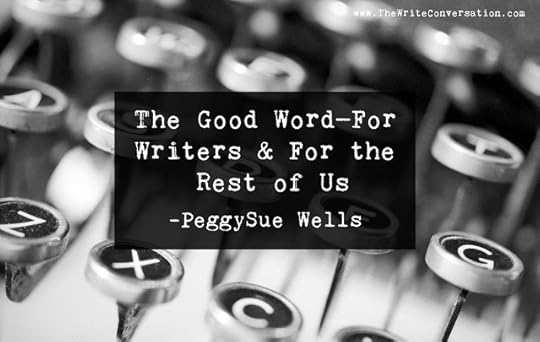
by PeggySue Wells @PeggySueWells
Father of seven and author of the bestselling series Dragons in our Midst, Oracles of Fire, Children of the Bard, The Reapers Trilogy, Echoes from the Edge, and Dragons of Starlight, Bryan Davis received memorable advice at the beginning of his writing career. Bryan recalls the story.
I heard the word at the convention where my publisher introduced my first two books.
Expectant, I arrived early to the event. A wheelchair-bound gentleman was already there.
“I don’t know why I’m here,” the man said to the woman at his side. “I don’t have much to do with the company anymore.”
We were introduced. The president of the publishing company, Dr. Spiros Zodhiates shook my hand. “You’re the author of the children’s books who quit your job to pursue writing though you had no book contracts.” His eyes widened with delight. “Now I know why God called me here. He wants to give you a word.”
“What word is that?”
“Autarkeia. Greek for contentment. Paul used the word in Philippians when he said he learned to be content in all circumstances.” Dr. Zodhiates pointed at me. “God will care for your needs.”
Later, I rented a booth at a homeschool convention. A homeschooler myself, I thought I could sell well.
I also wanted to be a good steward of my money. I tracked expenses—gas, lodging, food. After an hour, I calculated expected profits based on the sales so far. At this rate, I would lose fifty dollars. I couldn’t afford to promote if I would lose money. I became assertive; trying to convince skeptical shoppers that fantasy books about dragons would enhance their children’s spiritual growth.
My efforts were fruitless. I polished my sales pitch. Read about heroes who rely fully on God as they step out in courage. I recalculated. I have to work harder.
At the convention’s end, I packed my unsold books.
A man leafed through my fathering book. “This would be good for my men’s ministry. I’ll buy it.”
I slid this last payment into my cash box and calculated a final total as he walked away. Short. I had failed.
The man stopped. “This was written by Bryan Davis.” He squinted at my author’s sign. “Are you Bryan Davis?”
“I am.”
He approached the table again. “You’re going to think this strange.”
“What is it?”
He withdrew his wallet. “God told me to find a man named Bryan.” He extended some bills. “And give him fifty dollars.”
I stared at the ten and two twenties. My knees nearly gave way.
He pushed the money toward me. “Will you take it?”
At home, I counted my sales and expenses totals. When I added the fifty, I had broken even to the dollar. I gave thanks.
God used a miracle to teach me the true meaning of this word. Contentment is a way of life. In a spectacular, personal way, God taught me contentment in this writing journey. That he is my sufficiency. Since that day, although I still take care to be sensible, I haven’t worried that God will provide for my every need. Autarkeia.
TWEETABLEA Good Word—For Writers and For the Rest of Us - from @PeggySueWells on @EdieMelson (Click to Tweet)
 Tropical island votary and history buff, PeggySue Wells parasails, skydives, snorkels, scuba dives, and has taken (but not passed) pilot training. Writing from the 100-Acre wood in Indiana, Wells is the bestselling author of twenty-eight books including The Slave Across the Street, Slavery in the Land of the Free, Bonding With Your Child Through Boundaries, Homeless for the Holidays, and Chasing Sunrise. Optimistic dream-driver, PeggySue is named for the Buddy Holly song with the great drumbeat. At school author visits, she teaches students the secrets to writing, and speaks at events and conferences. Connect with her at www.PeggySueWells.com, on Facebook at PeggySue Wells, and Twitter @PeggySueWells.
Tropical island votary and history buff, PeggySue Wells parasails, skydives, snorkels, scuba dives, and has taken (but not passed) pilot training. Writing from the 100-Acre wood in Indiana, Wells is the bestselling author of twenty-eight books including The Slave Across the Street, Slavery in the Land of the Free, Bonding With Your Child Through Boundaries, Homeless for the Holidays, and Chasing Sunrise. Optimistic dream-driver, PeggySue is named for the Buddy Holly song with the great drumbeat. At school author visits, she teaches students the secrets to writing, and speaks at events and conferences. Connect with her at www.PeggySueWells.com, on Facebook at PeggySue Wells, and Twitter @PeggySueWells.
What I Learned About Writing While Throwing Axes
by Sandy Kirby Quandt @SandyKQuandt
One day my husband, son, and I spent two hours hurling axes at a wooden target. As I threw my axe I hit the bull’s eye sometimes, and more times missed, I realized there are some lessons writers can learn from throwing axes.
What I Learned About Writing While Throwing Axes by @SandyKQuandt on @BRMCWC
There is no specific type of person you have to be to throw an axe, or to be a writer. There were groups of all ages and walks of life throwing that day, just as anyone who has a story to tell and puts in the effort to learn the craft can write.
There were throwers of all different skill levels. Some of us were newbies and it showed. Others like the bearded, Viking-hair-shaved, kilt wearer who brought his personal bag of axes were obvious pros. The pros had obviously taken the time to learn the proper techniques and had progressed from beginners to the pros they were that day. Just as an axe thrower starts at a basic level so do we writers, but there is hope that we will one day become pros.
In axe throwing if we’re going to hit the target, we have to get in the game, grab an axe, step up to the line, and throw the axe toward the target in front of us. As writers, if we want our words to hit the target and find an audience, we need to get in the game, step up to the line, and put our words on the page.
If we hurl an axe toward the target and it doesn’t stick the first, second, or even the third time, we pick the axe off the floor and throw it again. If our first attempts to hit the publishing target bounce off the wall and land with a solid thud to the ground for all the world to hear, we pick up that manuscript and send it into the publishing world again.
Just because our axe hits a bull’s eye once doesn’t mean we’ll score another bull’s eye on the next go round. Nevertheless, we keep trying. We may score an acceptance with one manuscript then miss with the next one we pitch. Nevertheless, we keep trying.
When we throw the axe and it doesn’t score a bull’s eye, we don’t discount the 1s, 2s, and 3s we have scored. All points big and small add up for the grand total. They don’t have to all be bull’s eyes. Each step forward in our writing journey is important no matter how small we may feel it is. We don’t dismiss those which seem insignificant in comparison to our overall goal.
There are no disqualifiers for hitting the target, wooden or written. What truly matters is a willingness to get in the game, grab that axe, step up to the line, and give it our best shot. Over and over and over again. Enjoying each step of the journey along the way.
[image error]Sandy Kirby Quandt is a former elementary school educator and full-time writer with a passion for God, history, and travel; passions that often weave their way into her stories and articles. She has written numerous articles, devotions, and stories for adult and children publications. Her devotions appear in two Worthy Publishing compilation books; So God Made a Dog, and Let the Earth Rejoice. She has won several awards for writing including the 85th and 86th Annual Writer’s Digest Writing Competition in the Young Adult category, First Place in the Blue Ridge Mountains Christian Writers Conference Children’s Literature 2016 Foundation Awards, First Place in the 2017 Foundation Awards in the Young Adult, Middle Grade, and Flash Fiction categories. Looking for words of encouragement or gluten-free recipes? Then check out Sandy’s blog, Woven and Spun.
The post What I Learned About Writing While Throwing Axes appeared first on Blue Ridge Mountains Christian Writers Conference.
February 2, 2020
Writing Conferences and Story Pitches
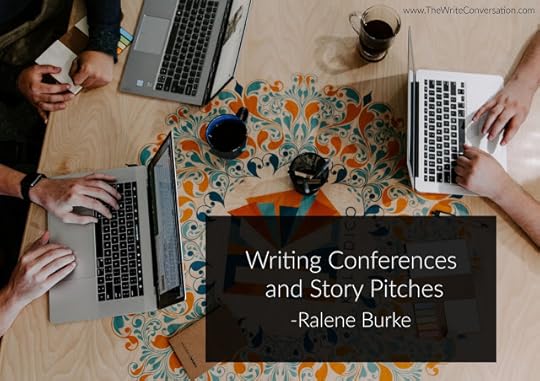
by Ralene Burke @RaleneB
With Realm Makers registration having opened on February 1, I have had writers conferences on my mind a lot lately. As Marketing Director for Realm Makers, I have to know the ins and outs of the conference in order to highlight the important aspects in our marketing efforts as well as answer any questions that may come through social media (or at least be able to find the answer).
One thing writers always want to know about is WHO is attending the conference (agents, publishers, mentors, etc.). And then they want to know what each one wants to hear/have at their pitch appointments. Note: While requirements may differ from individual to individual, if you have a few things handy for all your pitch sessions, you’ll likely have what they want. I’ve always brought: one sheetproposalfirst 3 chaptersbusiness card
I don’t outright give these to everyone I pitch to, but, if they ask for them, I at least have them on hand!
Another Side Note: Did you know that one sheets are not widely used outside of the Christian publishing market? If you go to a general market conference, hardly anyone knows what a one sheet is!
For many newbies, once they know who is coming, they always follow with an internal, “But how do I pitch my story?”
Pitching is just the way writers get to tell someone about their stories. And there are great posts around the web about how to build a good pitch. Especially the “30-second Pitch.” (Google “pitching for fiction writers.”)
However, I want to share about something I’ve learned over the years. Are you ready?
Are you sure?
Okay…
While plot points are important and good to highlight, it’s the emotional or interpersonal conflict that drags people into the story.
A lot of times, when we’re pitching, we just want to rattle off the plot, point-by-point. We’re nervous, and plot points are an easy guide to getting the story out.
You know how they say there is nothing new under the sun?
The same goes for most plots. What draws readers (and potential agents/editors) in is the unique people and their unique issues that get placed into those plots. Do you know how many re-imaginings of Romeo and Juliet there are? How about Cinderella? Yeah. Point made.
Recently, I read Brand of Light , a sci-fi novel by Ronie Kendig. Now, I’m not a big fan of reading sci-fi. Never have been. However, when the book was “pitched” to me, I found the story was more of a space opera (think Star Wars), rather than sci-fi. Space opera is much more character-focused (still with great plots). People described their favorite characters, not their favorite twists.
And when I read it, I found the story had both! I gobbled the novel in just a few days. Might have been a single day if I weren’t so busy lately.
So, if you’re planning to pitch at a conference this year, or if you plan to write up a proposal, don’t forget to play up the inner struggles and interpersonal relationships in the story. After all, without the people, what point would a plot have?
Do you find you are more of a plot-driven or character-driven writer?
Also, if you’re a speculative fiction writer, you should check out Realm Makers! Thomas Locke (spec pseudonym for Davis Bunn) is our keynote speaker this year. And we’re also excited to have other fiction greats like Steven James, N.D. Wilson, an C.J. Redwine. #RealmMakers2020 will be held in Atlantic City, July 16-18!
TWEETABLE
Writing Conferences and Story Pitches - tips from @RaleneB on @EdieMelson (Click to Tweet)
 Whether she’s wielding a fantasy writer’s pen, a social media wand, or a freelance editor’s sword, Ralene Burke always has her head in some dreamer’s world. And her goal is to help everyone #SHINE Beyond their circumstances! Her novels, Bellanok and Armor of Aletheia, are available on Amazon. More fantasy novels coming soon!
Whether she’s wielding a fantasy writer’s pen, a social media wand, or a freelance editor’s sword, Ralene Burke always has her head in some dreamer’s world. And her goal is to help everyone #SHINE Beyond their circumstances! Her novels, Bellanok and Armor of Aletheia, are available on Amazon. More fantasy novels coming soon!When her head’s not in the publishing world, she is wife to a veteran and homeschooling mama to their three kids. Her Pinterest board would have you believe she is a master chef, excellent seamstress, and all-around crafty diva. If she only had the time . . . You can also find her on Facebook, Instagram, Twitter, or at her website.
February 1, 2020
A Terrible Torrent of Words: Writing from Grief
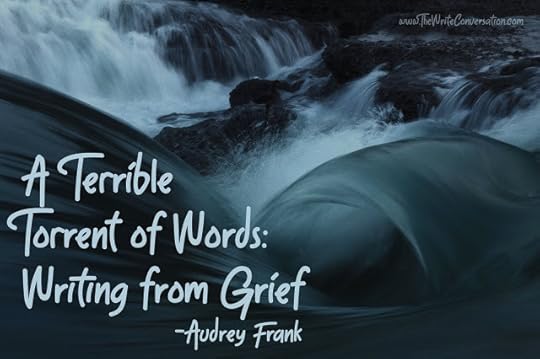
by Audrey Frank @AudreyCFrank
Save me, O God, for the waters have come up to my neck. I sink in the miry depths, where there is no foothold. I have come into the deep waters; the floods engulf me (Psalm 69:1-3).
What does the writer do when grief releases a terrible torrent of words in her soul, words so rough and distressing she almost dare not record them? The world she thought she knew, it would seem, has been permanently altered by loss. The words she once used to package her thoughts no longer seem to fit. She needs new ones. Superlative adjectives.The grieving writer wonders if she can ever share her words with others again. The pen, once a comfort, feels like a dagger in her hand. She doesn’t wish to hurt others with its sharp blade. Should she take up this weapon? Can she trust her trembling hands to wield it skillfully even as her eyes are blinded by tears?
The words that come like a flood in times of grief need to be expressed. Unavailable in times of comfort and ease, they are uniquely accessible only through the crushing of sorrow, Such words need to be recorded for posterity’s sake, for the sake of our own hearts and the hearts of the suffering ones who believe they are alone.
For writers, those entrusted with the stewardship of words, our commission does not end when we are hurting. Our Gentle Commissioner will help us find our way through the pain one word at a time.
I am finding there is a method to this process.
Write without a target audience.
I have often taken a photo example of my target audience and taped it to my laptop to glance at as I write. It helps me focus on my objective and humanize my message.
But when one is broken by sorrow, there is no audience but God.
Pour out your burden, your grief, with full abandonment to your God. This is the ultimate, intimate space for the follower of Jesus. You. And Him. That is all.
If you must place a picture in your mind, or tape it to your laptop, tape your own. His eyes are on you as you pour out your soul, and you are the apple of His eye, the one whom His heart loves.
Write without an editor.
It took me several seconds to realize that my words were a jumble of Arabic and English script. I was weeping so heavily that I had intermittently hit the language transition key on my keyboard as I pounded away. I didn’t even care. It was fitting for the state of my mind and heart. It captured the jumble of emotions I felt.
Writing in grief often takes its own unique form. There have been days in recent months that all I could do was write poetry. Regular grammar and syntax could not capture my feelings adequately. There have been other days that my grief-writing was a bullet point list of words and phrases that strengthened me that day.
Write without manners.
I believe in discretion and manners, especially in the stewardship of words. But I have found that grief doesn’t care much for my manners. It appears when it wants and interrupts my plans. It makes me ugly cry. Grief makes words pop out of me that leave me embarrassed and awkward in the ensuing silence between me and a friend who was only trying to help.
Grief strips the human soul naked before itself. We are already fully known by the Lord, but in times of normal and comfort, we manage somehow to hide from even our own eyes. Grief and sorrow have a way of revealing the hidden things.
At one point I found my manners were preventing me from communicating honestly even with myself about how much I truly was hurting inside. Putting such searing pain into words was ugly, unattractive, impolite. When I gave in and let the words flow before my Savior, I was liberated.
Manners don’t matter much to God either, it would appear. He loves me even when grief mortifies me with my own rudeness.
Share Your Writing with others through a Filter Friend.
When my son was critically burned in a house fire last autumn, I was unwillingly thrust into a new world of pain and suffering. What I was seeing each day, what I was hearing, what I was doing, no person would ever choose.
After the initial days of shock, the words began to come like a terrible torrent in my heart. They scared me with their strength, their fierce demand to be given a voice. I began to write snatches here and there, bits on a note pad, a few lines in the notes app on my phone. Every word seemed important and urgent as if it was living history that had to be recorded. And indeed it was.
Through my hurt, I was vaguely aware of the concern that my words might shock and alarm others. Grief, shock, and anger aren’t where many of us want to be. Not exactly cheery party chat material, especially around the holidays.
So I began to write from my grief, and when I felt compelled to share, I sent my words first to a friend to filter them. Am I too harsh? Have I managed to bring comfort or alarm? With her gentle and compassionate help, I was able to share my grief words with others in a helpful, rather than harmful, form.
I am still writing from grief and will be for some time. And for as long as it takes, I will rely on the help of my filter friends to fashion these hurting words into comfort.
I hope you are not in a place of grief right now. But I know too well that many of us do face this terrible torrent of words at one time or another. Don’t be afraid to write from sorrow. So many are suffering in silence, hidden away. They think they are alone. Our words recorded in the storm might be the lighthouse they need to make it to safe harbor.
Lord, when the floods of grief engulf me, give me the liberating comfort of words. Amen.
TWEETABLEA Terrible Torrent of Words: Writing from Grief - @AudreyCFrank on @EdieMelson (Click to Tweet)
 Audrey Frank is an author, speaker, and storyteller. The stories she shares are brave and true. They give voice to those whose words are silenced by shame, the hard things in life that don’t make sense, and the losses that leave us wondering if we will survive. Audrey and her family have spent over twenty years living and working among different cultures and world views, and she has found that God’s story of redemption spans every geography and culture. He is the God of
Instead
, giving honor instead of shame, gladness instead of mourning, hope instead of despair. Although she has three different degrees in communication and intercultural studies, Audrey’s greatest credential is that she is known and loved by the One who made her.
Audrey Frank is an author, speaker, and storyteller. The stories she shares are brave and true. They give voice to those whose words are silenced by shame, the hard things in life that don’t make sense, and the losses that leave us wondering if we will survive. Audrey and her family have spent over twenty years living and working among different cultures and world views, and she has found that God’s story of redemption spans every geography and culture. He is the God of
Instead
, giving honor instead of shame, gladness instead of mourning, hope instead of despair. Although she has three different degrees in communication and intercultural studies, Audrey’s greatest credential is that she is known and loved by the One who made her.Audrey is the author of Covered Glory: The Face of Honor and Shame in the Muslim World (Harvest House Publishers), an outpouring of Audrey’s heart to introduce others to the God of Instead. Shame is not unique to the developing world, the plight of the women behind veils, young girls trafficked across borders; shame is lurking in hearts everywhere. Through powerful stories from women around the world, Covered Glory illuminates the power of the Gospel to remove shame, giving honor instead. Available at favorite booksellers: Barnes & Noble , Books A Million, Amazon.
You can also find Audrey at www.audreyfrank.com, as well as on Twitter and Facebook



